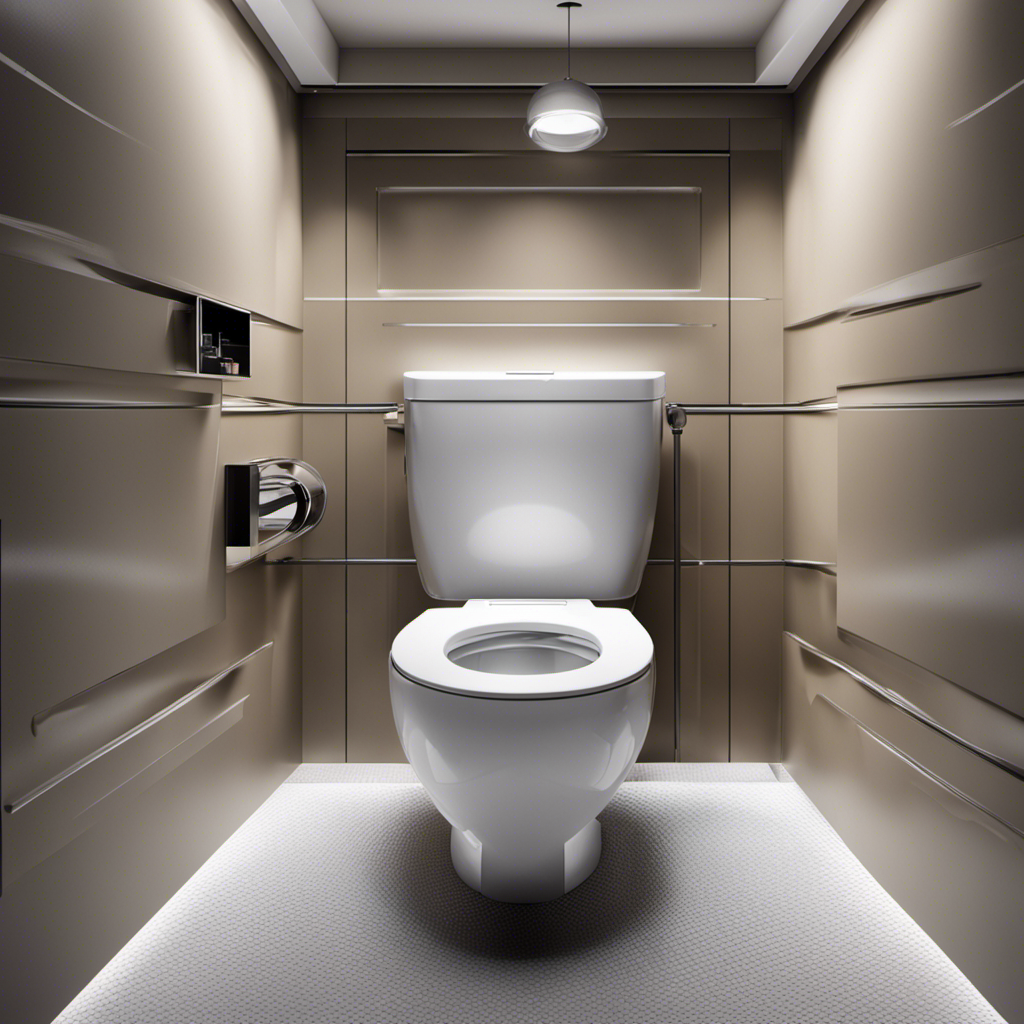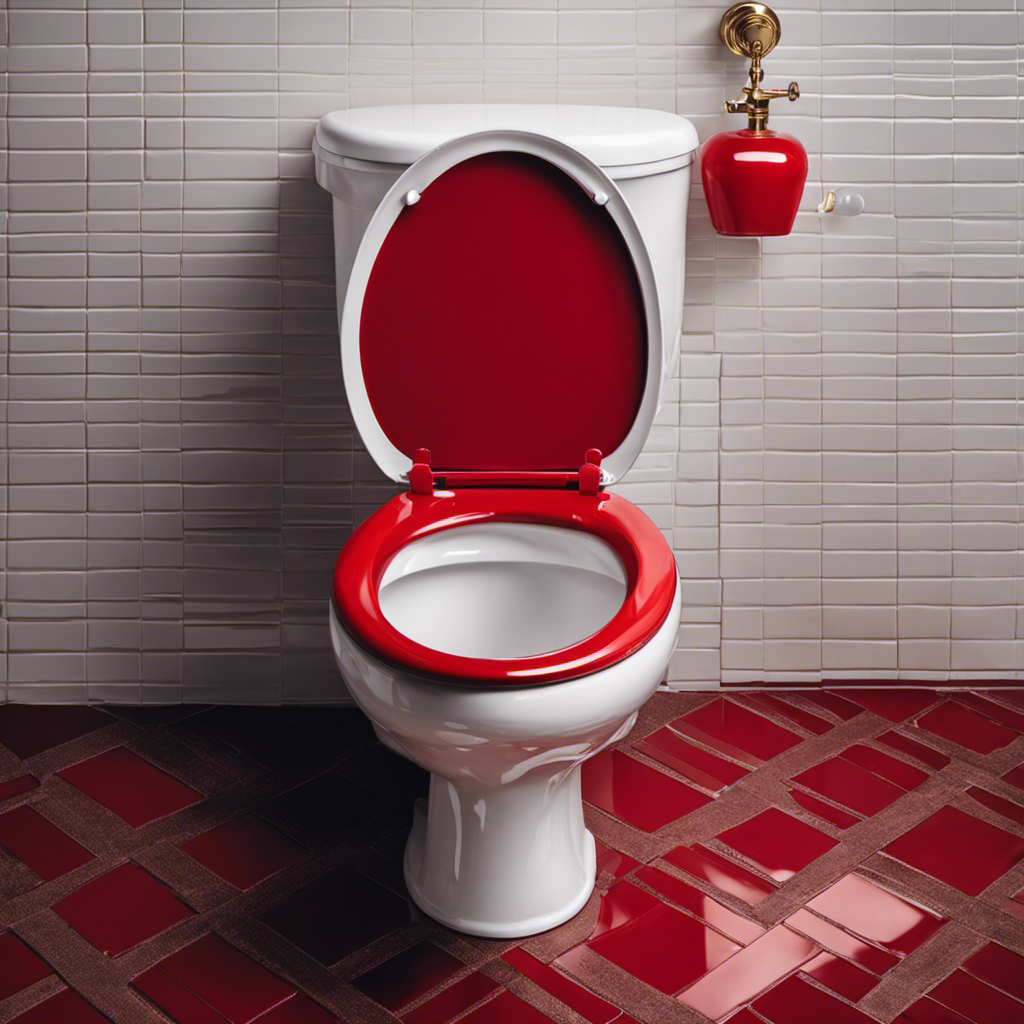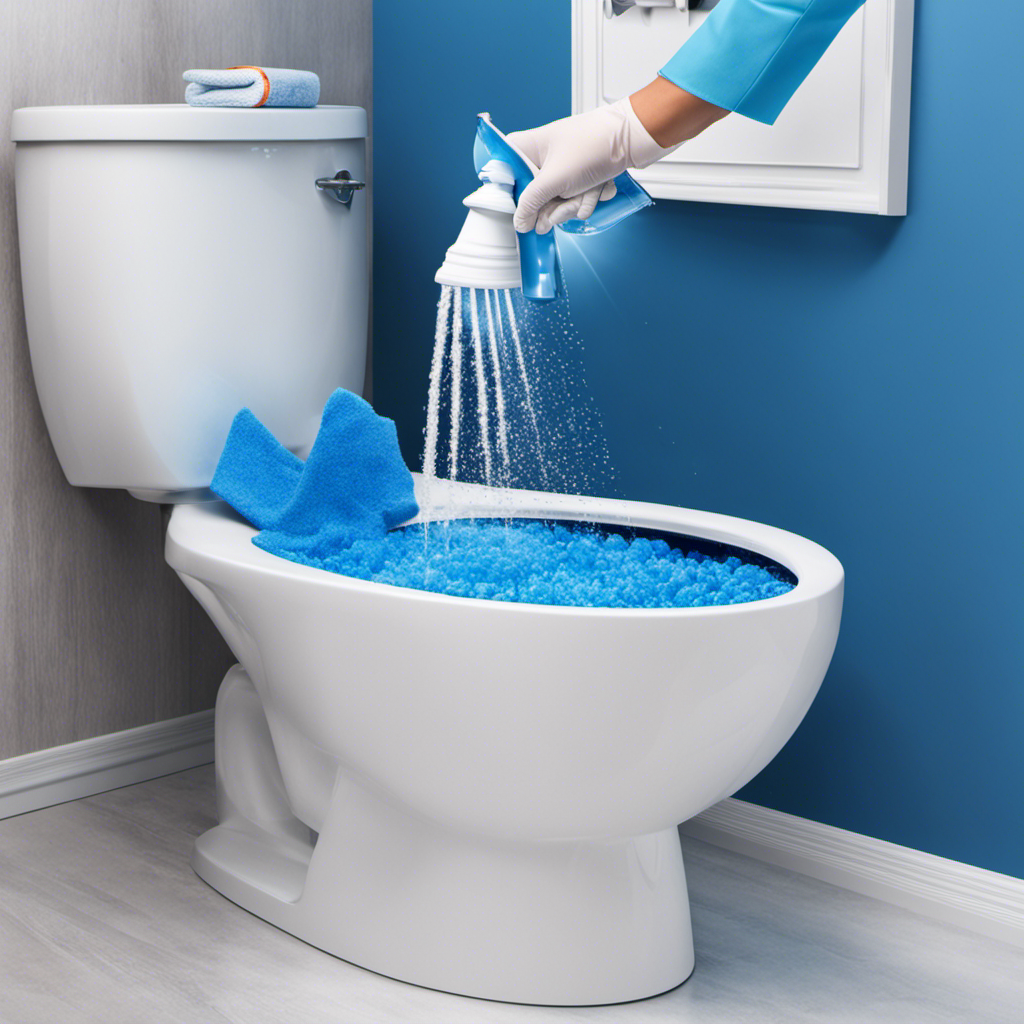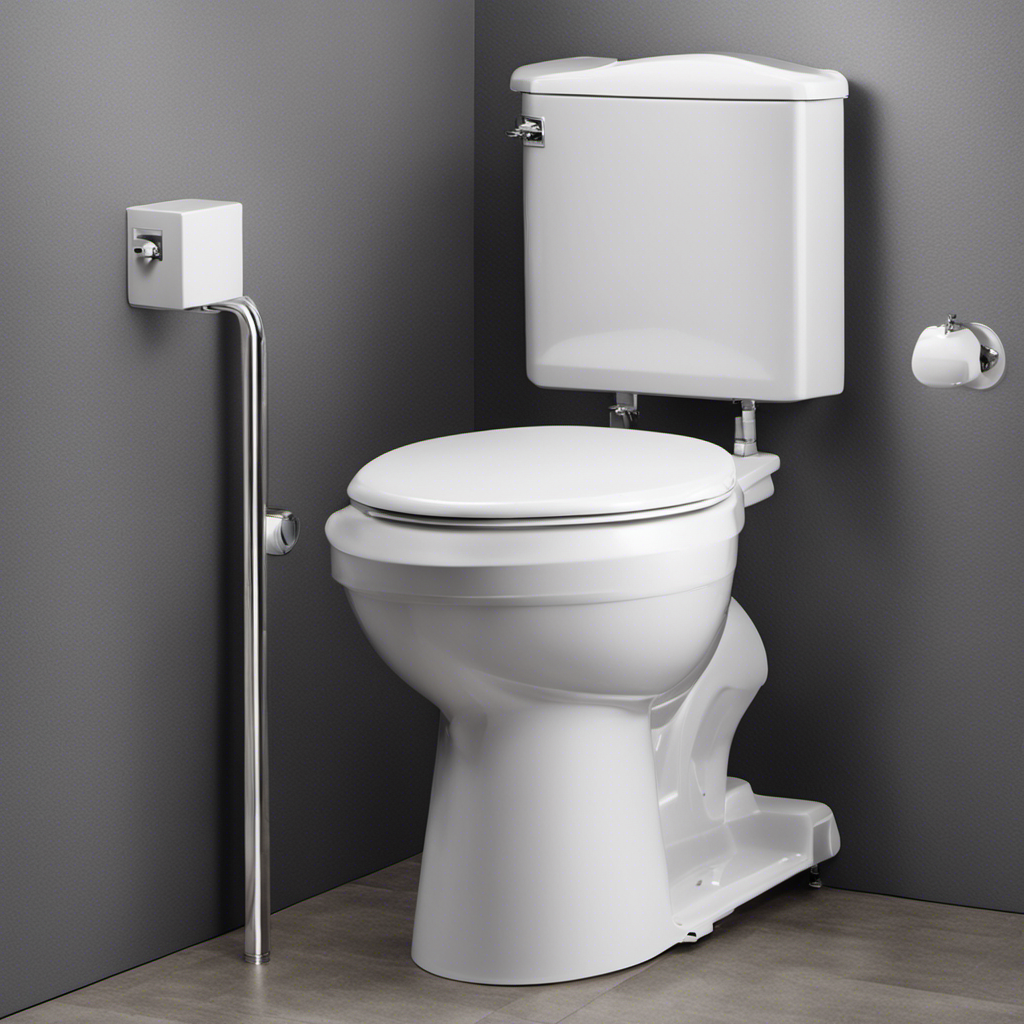As a plumbing expert, I can’t help but marvel at the persistent nature of a running toilet. It’s like a leaky faucet that just won’t quit, an incessant drip-drip-drip that tests your patience.
But fear not, for I am here to shed light on the common causes behind this frustrating issue and guide you through the steps to fix it.
From identifying the problem to troubleshooting tips, together we will conquer the relentless pursuit of a tranquil bathroom.
Key Takeaways
- Faulty flapper valve and worn or damaged flapper valve are common causes of a running toilet.
- Identifying a running toilet can be done by listening for the sound of running water, monitoring the water level in the bowl, and checking for unusually high water bills.
- A running toilet can lead to excessive water usage, wasting hundreds of gallons of water per day and putting strain on water resources.
- To fix a running toilet, steps include turning off the water supply valve, checking for obstructions in the tank, inspecting the flush mechanism and valve, and adjusting the float position to control the water level.
Common Causes of a Running Toilet
One of the most common causes of a running toilet is a faulty flapper valve. The flapper valve is responsible for controlling the flow of water from the tank to the bowl. When it becomes worn or damaged, it can no longer create a proper seal, causing water to continuously leak into the bowl.
This not only leads to the annoying sound of a running toilet but also wastes a significant amount of water. Toilet repair is essential not only for preventing water wastage but also for conserving water, which is crucial for the environment.
Identifying a running toilet issue can be done by listening for the sound of running water or monitoring the water level in the bowl.
How to Identify a Running Toilet Issue
I’ve noticed that my water bill has been unusually high lately.
I’ve also been hearing a continuous noise coming from my toilet.
These two issues could be related and may indicate a running toilet problem.
A running toilet can waste a significant amount of water and lead to higher water bills, so it’s important to address this issue as soon as possible.
Water Bill Too High
If your water bill is too high, you might want to check if your running toilet is the culprit. A running toilet can waste a significant amount of water, leading to high water usage and increased costs.
Here are three reasons why a running toilet can have a negative impact on both your wallet and the environment:
-
Water wastage: A running toilet can waste hundreds of gallons of water per day, significantly increasing your water bill. This excessive water usage puts a strain on water resources and contributes to water scarcity issues.
-
Environmental impact: The constant flow of water from a running toilet not only wastes water but also puts unnecessary pressure on sewage treatment plants. It increases the energy required to treat and manage wastewater, leading to increased carbon emissions and environmental degradation.
-
Sustainable living: By addressing a running toilet issue, you can reduce your water consumption and make a positive impact on the environment. Fixing a running toilet is a simple yet effective way to promote sustainable living and conserve precious water resources.
Continuous Noise From Toilet
The continuous noise from the toilet could be due to a faulty flapper valve. When the flapper valve doesn’t seal properly, water constantly leaks from the tank into the bowl, causing the toilet to run continuously. This not only creates an annoying noise but also wastes a significant amount of water. As a knowledgeable professional in toilet repair services, I can diagnose and fix this issue efficiently.
It is important to address a running toilet promptly, not only to eliminate the noise but also to prevent negative impacts on the environment. A running toilet can waste hundreds of gallons of water every day, which contributes to water scarcity and increased water bills. By utilizing my technical expertise, I can ensure that your toilet operates efficiently, minimizing water waste and reducing your environmental footprint.
Don’t let a running toilet go unresolved – contact me for reliable and eco-friendly toilet repair services.
Steps to Fix a Running Toilet
To fix a running toilet, the first step is to identify the water source. This can be done by turning off the water supply valve located behind the toilet.
Next, check for any obstructions in the toilet tank, such as a stuck flapper or a tangled chain.
Identify Water Source
Check if the water source for your toilet is the cause of the constant running. The first step in troubleshooting a running toilet is to determine if it’s a problem with the water supply. Here are three things to check:
-
Toilet Water Pressure: Insufficient water pressure can prevent the toilet tank from filling up properly, causing it to constantly run. Check the water pressure in your home and ensure it is within the recommended range for toilets.
-
Leaking Toilet Tank: A leaking toilet tank can also lead to continuous running. Inspect the tank for any visible cracks or leaks. If you notice any, it may be necessary to replace the tank or repair the leak.
-
Faulty Fill Valve: The fill valve controls the flow of water into the toilet tank. If it is not functioning properly, it can cause the toilet to keep running. Check the fill valve for any signs of damage or wear and consider replacing it if necessary.
Check for Obstructions
Having identified the water source as the cause of the running toilet, the next step is to check for obstructions in the toilet valve or the toilet flush mechanism. Obstructions can prevent the valve from sealing properly, leading to continuous water flow.
To begin, turn off the water supply to the toilet and flush it to drain any remaining water. Inspect the toilet valve for any debris or mineral buildup that may be hindering its functionality. Clean or replace the valve if necessary.
Next, examine the toilet flush mechanism, including the flapper and the chain. Ensure that the flapper is sealing tightly and that the chain is properly connected and not tangled.
By checking for obstructions in the toilet valve and flush mechanism, you can address any issues that may be causing the toilet to keep running.
Now, let’s move on to the next step: adjusting the float position.
Adjust Float Position
Now, you’ll want to make sure the float is properly positioned. The float is a small plastic or metal device inside the toilet tank that controls the water level. If the float is not adjusted correctly, it can cause the toilet to keep running.
Here are three steps to adjust the float level:
-
Locate the fill valve: The fill valve is usually located on the left side of the toilet tank. It is connected to the water supply line.
-
Adjust the float level: Turn the adjustment screw on the fill valve clockwise to lower the float level or counterclockwise to raise it. The ideal position is when the water stops running just below the overflow tube.
-
Test the adjustment: Flush the toilet and observe if the water stops running at the desired level. If not, repeat the adjustment until the desired level is achieved.
If adjusting the float level does not solve the problem, it may be necessary to replace the faulty fill valve.
Troubleshooting Tips for a Running Toilet
If your toilet keeps running, you might want to try adjusting the float.
As a professional plumber, I can offer some troubleshooting tips for DIY toilet repairs.
First, check the water level in the tank. If it’s too high, adjust the float to a lower position. The float controls the water flow and can be adjusted by turning the adjustment screw or moving the float arm.
Next, inspect the flapper valve. A worn or misaligned flapper can cause water to continuously leak into the bowl. Replace it if necessary.
Additionally, check the fill valve for any debris or mineral buildup that could hinder its proper functioning.
Regular toilet maintenance and timely repairs can save you from costly water bills and ensure your toilet operates efficiently.
Importance of Addressing a Running Toilet
Now that we’ve discussed troubleshooting tips for a running toilet, let’s delve into why it’s important to address this issue promptly. Regular toilet maintenance is crucial for several reasons:
-
Water conservation: A running toilet can waste a significant amount of water, flushing away up to 200 gallons each day. This strains our water resources and increases water bills unnecessarily.
-
Environmental impact: The excessive water usage caused by a running toilet contributes to the depletion of freshwater sources and puts pressure on ecosystems. It also adds to carbon emissions and climate change due to the energy required to treat and distribute water.
-
Cost savings: By promptly addressing a running toilet, you can prevent excessive water usage and lower your utility bills. Taking care of minor issues early on can also prevent more significant and costly repairs down the line.
Regular toilet maintenance is essential not only for conserving water and reducing costs but also for minimizing the environmental impact of our daily activities.
Signs of a Damaged Toilet Flapper
One sign of a damaged toilet flapper is when the water in the tank constantly leaks into the bowl. This can be a frustrating problem, but fortunately, it is often a simple fix that you can do yourself.
A toilet flapper is a rubber valve that controls the flow of water from the tank into the bowl. Over time, the flapper can become worn or warped, causing it to lose its seal and allowing water to continuously flow.
To replace the flapper, first, turn off the water supply and drain the tank. Then, remove the old flapper and install a new one, making sure it fits properly and creates a tight seal. DIY toilet repairs like flapper replacement can save you time and money.
However, if you are unable to fix the issue or if it persists, it may be time to seek professional help for your running toilet problems.
Professional Help for Persistent Running Toilet Issues
When you’re unable to fix the issue or when it persists, it might be time to consider seeking professional help for your persistent running toilet problems. While some running toilet issues can be resolved with simple DIY solutions, such as adjusting the flapper or replacing the fill valve, there are instances where the problem may require the expertise of a professional plumber.
Here are three reasons why professional plumbing assistance is often necessary for persistent running toilet problems:
-
Complex internal components: A running toilet can have various internal components that may require technical knowledge to diagnose and repair correctly. A professional plumber has the experience and expertise to identify and fix these complex issues effectively.
-
Hidden leaks: A running toilet may indicate hidden leaks in the plumbing system. These leaks can be challenging to detect without specialized equipment. A professional plumber can conduct a thorough inspection to identify any hidden leaks and repair them promptly.
-
Warranty and guarantee: Hiring a professional plumber ensures that you receive high-quality service backed by warranties and guarantees. They can provide long-term solutions to your running toilet problems, giving you peace of mind and saving you from unnecessary expenses in the future.
Conclusion
In conclusion, a running toilet can be a frustrating and wasteful problem that needs to be addressed promptly. By understanding the common causes and following the steps to fix it, you can save both water and money.
Remember, a running toilet is like a leaky faucet in the middle of the night, constantly dripping away our resources. Just as we wouldn’t ignore a leaky faucet, we shouldn’t ignore a running toilet.
Take action, fix it, and enjoy a peaceful and efficient bathroom experience.










